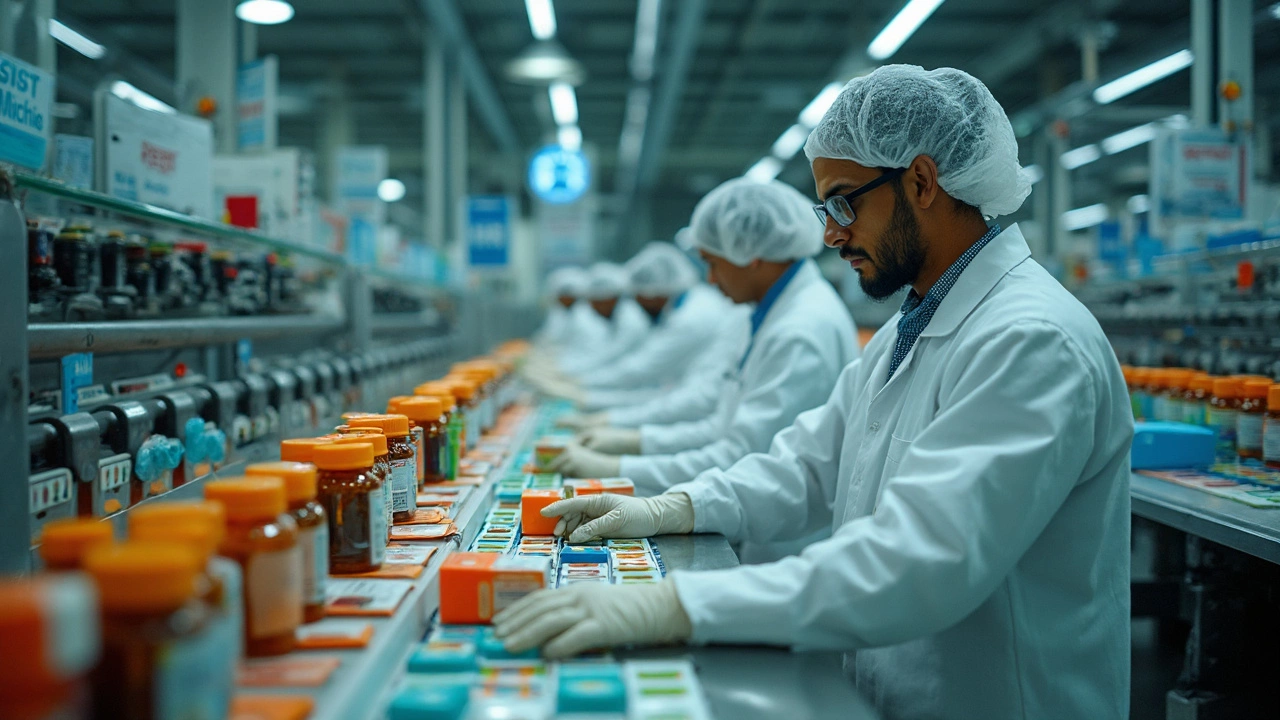- Exploring India's Textile Hub: Unveiling the World Capital Mar 26, 2025
- Which chemicals are in most demand in India's manufacturing sector? Dec 19, 2025
- Most Reliable Cars in Asia: Top Picks & Insider Insights Jul 27, 2025
- Kiran Mazumdar‑Shaw: The Pharma Queen of India Explained Oct 13, 2025
- Which Manufacturing Sector Is the Most Profitable in 2025? Oct 26, 2025
Medication Origins: How Drugs Are Made and Where They Come From
Ever wonder why a pill you take has a label that says "Made in India" or why the same medicine costs less abroad? The answer lies in the whole journey from raw material to finished product. Knowing the steps helps you understand price differences, safety standards, and where the next breakthrough might appear.
From Plant to Pill: The Production Journey
The first step is sourcing the active ingredient. Some drugs start from plants—think of morphine from poppy or quinine from cinchona bark. Others are synthesized in a lab using chemicals like petroleum‑derived feedstock. Once the active pharmaceutical ingredient (API) is ready, it goes through purification, testing, and quality checks.
Next comes formulation. The API is mixed with fillers, binders, and coatings to create tablets, capsules, or liquids. This stage is where manufacturers decide on dosage, release rate, and stability. Every batch is tested for potency, dissolution, and purity before it moves to packaging.
Packaging isn’t just about a pretty box. It protects the medicine from light, moisture, and tampering. Labels must include batch numbers, expiry dates, and regulatory warnings. A proper package also lets distributors track the product through the supply chain.
Finally, the finished product travels through distributors, wholesalers, pharmacies, or hospitals. Each hand‑off adds a layer of documentation to meet local regulations. The more transparent the chain, the easier it is to spot problems early.
India’s Edge in Global Pharma
India dominates the API market because of low production costs, skilled engineers, and a supportive policy environment. The country’s generic‑drug industry can churn out medicines at a fraction of the cost seen in the US or Europe. That’s why many multinational firms outsource active ingredient production to Indian plants.
Regulatory bodies like the Central Drugs Standard Control Organization (CDSCO) and the US FDA inspect Indian facilities regularly. When a plant passes these audits, its products gain global trust. This combination of cost efficiency and compliance makes Indian pharma a go‑to source for both branded and generic drugs.
For businesses looking to source medicines, a few practical tips help avoid pitfalls. First, verify the manufacturer’s certifications and audit reports. Second, request sample batches for independent testing before committing to large orders. Third, consider the logistics route—ports like Mumbai and Chennai offer fast shipping, but customs clearance can add hidden fees.
Consumers also benefit from understanding medication origins. If a drug is cheaper because it’s a generic made in India, you’re likely getting the same therapeutic effect as the brand‑name version. However, always check that the product carries the proper regulatory approvals for your country.
In short, the story of any medication starts with raw material, moves through a tightly controlled manufacturing process, and ends up on a pharmacy shelf thanks to a global network. India’s role in this story is huge, providing cost‑effective APIs and finished drugs that keep the world’s health system running. Knowing these steps helps you make smarter choices, whether you’re a buyer, a health professional, or just someone curious about the pills in your cabinet.
Where Does CVS Get Their Drugs From? Inside the Pharma Manufacturer Pipeline
- Aarav Sekhar
- Apr 27, 2025
Ever wondered where CVS gets the medicines you see on its shelves? This article looks behind the scenes into CVS’s global supply chain, focusing on the key role of India’s pharmaceutical manufacturers. Get clear answers on how CVS chooses suppliers, ensures safety, and what all of this means for your trust and wallet. You'll also pick up a few tips to make smarter choices next time you fill a prescription.
